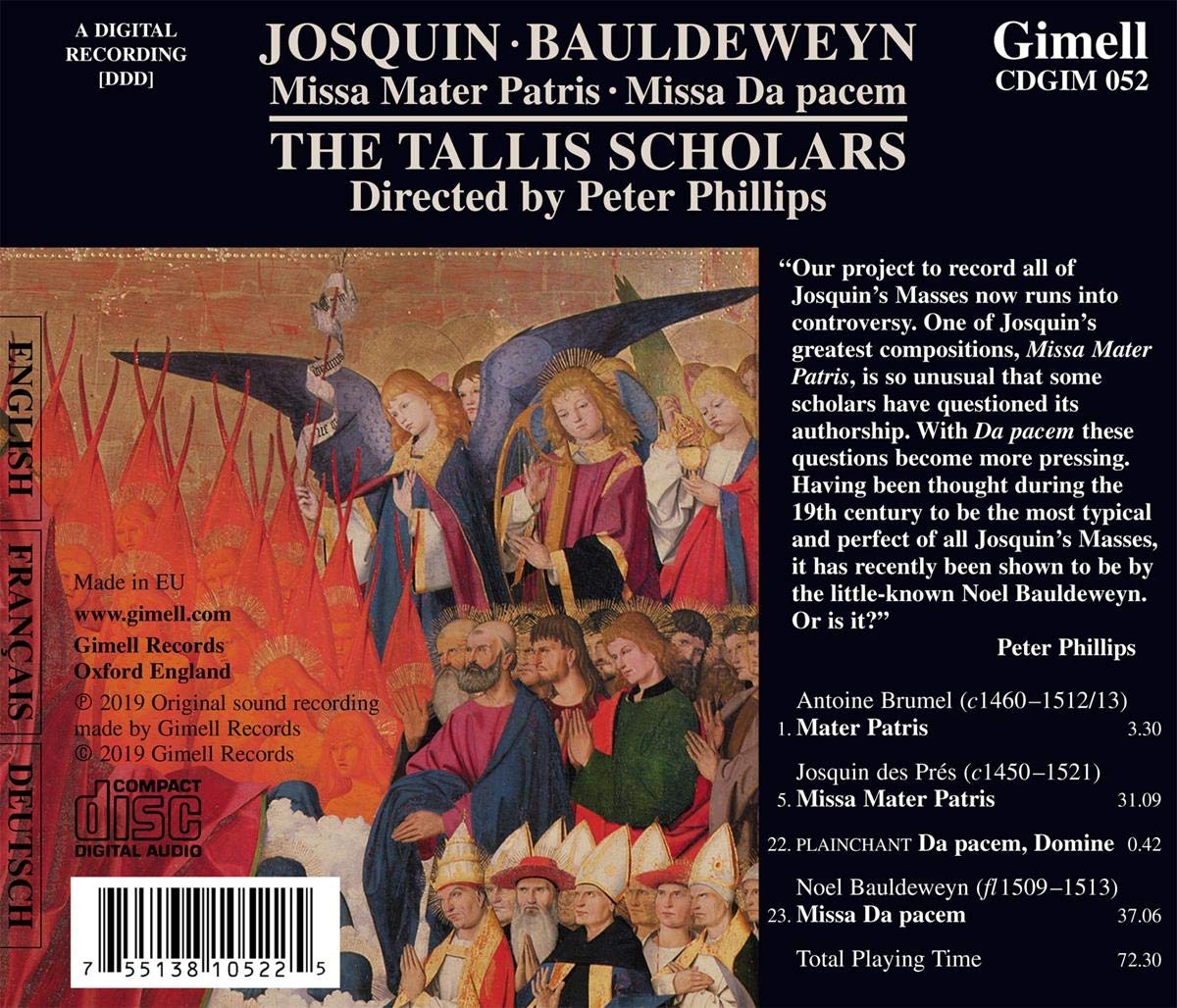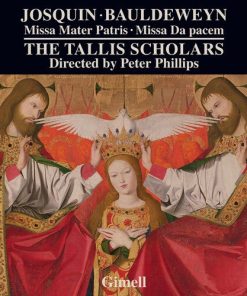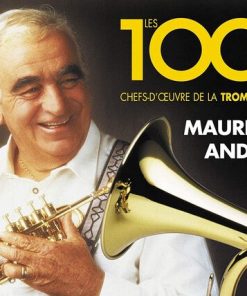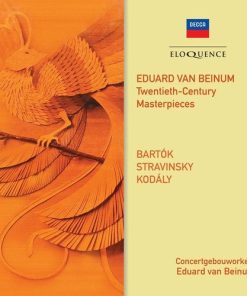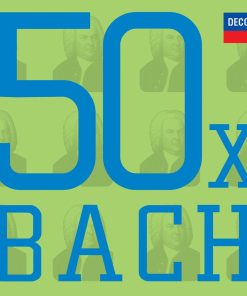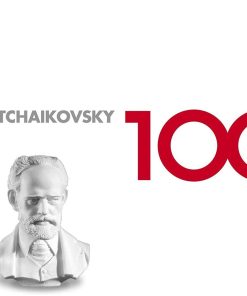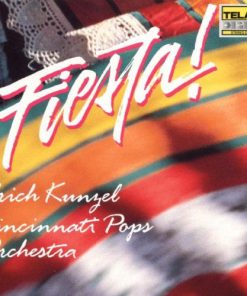Josquin: Missa Mater Patris; Bauldeweyn: Missa Da Pacem – Tallis Scholars GIMELL
$ 19,99 $ 11,99

I remember a certain eminent man saying that, now that Josquin is dead, he is putting out more works than when he was alive.’ (Georg Forster, 1540)
With Missa Mater Patris and Missa Da pacem our project to record all of Josquin’s Masses runs into controversy. Who wrote these pieces, and when? In the case of one of Josquin’s greatest Mass-settings, Missa Mater Patris, its style is so unusual that some scholars have questioned its authorship. With Da pacem these questions become more pressing. Having been thought during the nineteenth century to be the most typical and perfect of all Josquin’s Masses, it has recently been shown to be by the little-known Noel Bauldeweyn. Or is it?
Josquin’s Missa Mater Patris is one of his most forthright compositions, full of daring in a bracingly simple style. In many people’s minds ‘simple’ tends to mean ‘early’ when categorising an artist’s output. But where the simplicity is the result of an artist having refined something which has evolved over a lifetime, then it can also indicate ‘late’, as many elderly writers, painters and musicians have shown over the centuries—Arvo Pärt is a current example. And paring down a highly developed method is exactly what Josquin shows in his Missa Mater Patris. Gone is the dense polyphonic argument of so much of his earlier music. In its place are light, open textures delivered with a good deal of wit, even playfulness. The Hosanna shows exactly this.
Alongside the unusual style of Mater Patris are Josquin’s detailed references to the music of Antoine Brumel. These also are unusual, since this is the only time in all his Masses that Josquin quoted the music of a contemporary—and he went to unheard-of lengths with these quotations, most remarkably in the third Agnus Dei. Furthermore, for the rest of the composition Josquin derived all his principal themes from Brumel’s work. It seems likely, then, that he was close to Brumel in life, and decided to write a homage to him, perhaps shortly after his death in either 1512 or 1513. Whether this would make Mater Patris Josquin’s last Mass-setting depends on the date one gives to his Missa Pange lingua, which has long been said to represent his last thoughts in setting the texts of the Ordinary. However the possibility remains that Josquin as an old man, after all the serious work, felt able to turn his hand to music which wears its learning lightly.
Unlike closely argued Mass-settings such as Gaudeamus or Sine nomine, Mater Patris essentially has only two types of writing, and these act as the perfect foil to each other: highly imitative duets, mostly sung by the two middle parts, and the solemn block-chords which often round them off. In addition to this there are three lengthy duets, all of them strict canons: ‘Pleni sunt caeli’ at the second above; the Benedictus at the second below; and the second Agnus Dei at the unison. Their length is determined by the amount of repetition in the music, something which characterises the Mass as a whole and is derived from the Brumel model (the Hosanna quotes Brumel’s ‘exaudi’ motif thirty-four times and at every modal pitch).
And then there is the third Agnus Dei, the astonishing crowning glory, where Josquin swallowed Brumel’s Mater Patris almost whole, making it form the three middle voices of a five-voice texture, the outside voices being newly composed. My favourite moment is just before the final block-chord statement of ‘Agnus Dei’ where Josquin has added his own two parts to what was a duet in the model. He has heard the possibilities in the Brumel so clearly that his own inventions are just as interesting, especially the manner in which the bass keeps repeating the same two notes—G and D—under Brumel’s music.
The Missa Da pacem has had one of the most disrupted histories in all of Renaissance music. Long thought to be by Josquin (there is some manuscript justification for a questionable attribution, as there is for so much of his music), in 1972 it was shown by Edgar Sparks to be by the little-known Noel Bauldeweyn (fl1509-13). Its exceptional reputation was launched in the middle of the nineteenth century when an Austrian scholar, August Wilhelm Ambros, wrote in his History of Music (1868): ‘The ‘incarnatus’ rises to a greatness which no old or new master, whatever his name might be, has surpassed. The most bold, tremendous, marvellous harmonic progressions break out one after another like flashes of sun; the awe of a most unknown spiritual realm wafts in them.’
This may tell us more about the attitudes of the nineteenth century than about those of the early sixteenth, but there was enough good music in Da pacem to confuse everyone for another hundred years. One of the pleasures of recording this setting was in tracking Josquin, or his influence, through its pages. Were the good passages good enough to be by him? How far below his standard did other passages fall? My own conclusion is that there are two substantial sections which could maintain an attribution to Josquin—the ‘Et incarnatus’ and the third Agnus Dei—and also several shorter phrases or subsections which could do. The problem is that the overall standard is not as high as Josquin’s average standard. Some of the material is routine, especially at cadences where the composer tended to repeat phrases where no amount of emphasis can make them more interesting.
There is a temptation to ascribe dual authorship to this setting, even though almost no examples of this practice during the Renaissance period (outside the workshops which the leading painters of the day maintained) have come down to us. How else does one account for the perfect pacing of the ‘Et incarnatus’? The third Agnus Dei is also a mesmerising movement, built on three voices in strict canon at three different octaves, surrounded by three free parts equally inhabiting the same three different octaves. The sonorities which this texture creates are unique, highlighted for me by the two bass parts which are allowed to sing low thirds and fifths, creating textures quite outside normal practice.
David Fallows wrote that Josquin’s Missa Mater Patris represents an ‘experiment that needed Josquin’s courage’. This is exactly what I would say about the third Agnus Dei of Missa Da pacem. As for most of the rest of it, this recording is now there for an informed opinion to be made. As one leading scholar, Richard Sherr, observed: ‘However, scholarly tastes change. Maybe a champion for the Missa Da pacem will one day appear.’ I hope this recording is that champion.

‘As one of the most important accounts of Josquin’s Masses in recent decades, Peter Phillips’s albums with The Tallis Scholars continue to sparkle and inform. Already in these pages I have admired the clarity of vision and consistency of sound that this ensemble bring to his works; but with this new album there is a particular sheen to the performance that places it among their recent best.’ (Gramophone)
‘The clear, bright sound of The Tallis Scholars is always a superb match for Josquin’s complex textures and their control of two-part textures is outstanding … a superb addition to their ongoing Josquin cycle’ (Gramophone)
‘The Scholars take the [Missa Mater Patris] at an aptly reverential tread, capturing its introspective—at times hypnotic—qualities. The writing is tight and spare, the composer contrasting imitative duets with richer chordal passages. Using just one or two voices to a part, this performance is both immediate and intimate … the Scholars realise the [Missa Da pacem] with all the clarity, precision, clarity and conviction for which they are justly renowned’ (BBC Music Magazine)

Mater Patris[3’30]
Antoine Brumel (c1460-1512/13)
1
Mater Patris et filia[1’03]2
Audi nostra suspiria[1’04]3
Bone Jesu, Fili Dei[0’33]4
Et precibus nostris[0’50]
Missa Mater Patris[31’05]
Josquin des Prez (c1450/55-1521)
5
Kyrie I[1’21]6
Christe[1’00]7
Kyrie II[1’02]8
Gloria in excelsis Deo[2’13]9
Qui tollis peccata mundi, miserere[1’24]10
Cum Sancto Spiritu[0’43]11
Credo in unum Deum[2’56]12
Crucifixus[1’34]13
Et in Spiritum Sanctum[2’23]14
Sanctus[1’50]15
Pleni sunt caeli[1’29]16
Hosanna I[1’34]17
Benedictus[2’13]18
Hosanna II[1’39]19
Agnus Dei I[1’29]20
Agnus Dei II[1’38]21
Agnus Dei III[4’37]22
Da pacem, Domine[0’42]Anonymous – liturgical
Missa Da pacem[37’04]
Noel Bauldeweyn (c1480-1530)
23
Kyrie I[1’28]24
Christe[0’50]25
Kyrie II[1’18]26
Gloria in excelsis Deo[3’02]27
Qui tollis peccata mundi, miserere[2’52]28
Credo in unum Deum[3’15]29
Et incarnatus est[1’30]30
Crucifixus[0’57]31
Et resurrexit tertia die[0’45]32
Et iterum venturus est[3’06]33
Sanctus[2’20]34
Pleni sunt caeli[1’56]35
Hosanna I[1’39]36
Benedictus[2’19]37
Hosanna II[1’44]38
Agnus Dei I[2’21]39
Agnus Dei II[2’45]40
Agnus Dei III[2’57]
Fast Shipping and Professional Packing
Due to our longstanding partnership with UPS FedEx DHL and other leading international carriers, we are able to provide a range of shipping options. Our warehouse staff are highly trained to pack your goods exactly according to the specifications that we supply. Your goods will undergo a thorough examination and will be safely packaged prior to being sent out. Everyday we deliver hundreds of packages to our customers from all over the world. This is an indication of our dedication to being the largest online retailer worldwide. Warehouses and distribution centers can be located in Europe as well as the USA.
Orders with more than 1 item are assigned processing periods for each item.
Before shipment, all ordered products will be thoroughly inspected. Today, most orders will be shipped within 48 hours. The estimated delivery time is between 3-7 days.
Returns
The stock is constantly changing. It's not entirely managed by us since we are involved with multiple parties such as the factory and our storage. The actual stock can fluctuate at any time. Please understand it may happen that your order will be out of stock when the order is placed.
Our policy is valid for 30 days. If you haven't received your product within 30 days, we're not able to issue either a return or exchange.
You are able to return a product if it is unused and in the same condition when you received it. It must also still remain in the original packaging.

